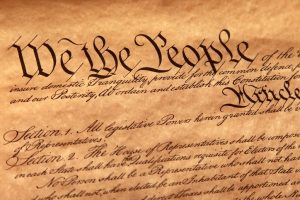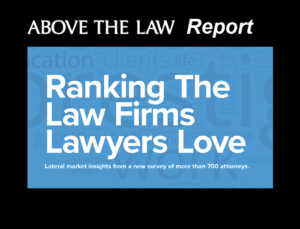Why Is Proving Race Discrimination A Lot Harder Than Proving Religious Discrimination?
Proving race discrimination requires proof of discriminatory treatment and intent, while proving free exercise violations can be done without either.
 Over at The Washington Post, Radley Balko has been continually updating a piece where he offers evidence that the “criminal justice system is racist.” Here are just a few of the examples Balko provides:
Over at The Washington Post, Radley Balko has been continually updating a piece where he offers evidence that the “criminal justice system is racist.” Here are just a few of the examples Balko provides:
A 2010 report by the Equal Justice Initiative documented cases in which courts upheld prosecutors’ dismissal of jurors because of allegedly race-neutral factors such as affiliation with a historically black college, a son in an interracial marriage, living in a black-majority neighborhood or that a juror “shucked and jived.”
In March of 2019, researchers compiled and analyzed data from more than 100 million traffic stops in the United States. What they found: Police were more likely to pull over black drivers. The researchers were able to confirm racial bias by measuring daytime stops against nighttime stops, when darkness would make it more difficult to ascertain a driver’s race. As with previous studies, they also found that black and Latino drivers are more likely to be searched for contraband — even though white drivers are consistently more likely to be found with contraband. They also found that legalization of marijuana in Colorado and Washington has caused fewer drivers to be searched during a stop, but that it did not alter the increased frequency with which black and Latino drivers are searched.
To put it mildly, there is a lot evidence out there that the criminal justice system treats people differently by race. Yet, as Michelle Alexander has explained, the Supreme Court has effectively closed the courthouse doors to claims of race discrimination via two cases: McCleskey v. Kemp, 481 U.S. 279 (1987) and United States v. Armstrong, 517 U.S. 456 (1996).

Law Firm Business Development Is More Than Relationship Building
In McCleskey, the Court held that racial bias in sentencing could not be challenged under the Fourteenth Amendment’s equal protection clause unless clear evidence of conscious, discriminatory intent was presented. In support of his claim, Warren McCleskey had presented a study, called the Baldus study, of more than 2,000 murder cases in Georgia (the state in which the defendant, McCleskey, was convicted). Acknowledging that numerous factors besides race can impact the judgment of juries, prosecutors, and judges when it comes to sentencing, the Baldus study took into account 35 nonracial variables. Nevertheless, even with those variables, the study found that defendants charged with killing white victims were 4.3 times more likely to receive the death penalty than defendants charged with killing black victims. Although the Court accepted these racial disparities as valid, and that “[t]aken to its logical conclusion” McCleskey’s claim “throws into serious question the principles that underlie our criminal justice system,” the Court nevertheless held that demonstrated patterns of race discrimination were not enough, and that McCleskey needed to show an admission that a prosecutor or judge acted because of racial bias. As any defense attorney will tell you, the problem with such a standard is that a plethora of procedural rules shield prosecutors from scrutiny. Moreover, the Armstrong decision made obtaining such evidence effectually impossible.
In Armstrong, the defendant, Christopher Armstrong, was charged with conspiracy to distribute 50 grams of crack cocaine. At the time, federal law punished crack offenses a hundred times more severely than offenses involving powdered cocaine (don’t get me started on that), whereas state penalties for crack cocaine were far less severe. The federal public defenders handling Armstrong’s case, however, had begun to notice a disturbing trend in the federal crack cases they handled: all the defendants were black. Indeed, in the previous three years that particular public defenders office had handled 53 crack cases, yet not one defendant was white, despite the fact that most crack users were (and are) white.
The suspicion was that white defendants were being diverted by federal prosecutors to the state system, where, again, the penalties were far less severe. Like the McCleskey case, the statistical evidence was absurdly damning. In order to prove the intent requirement, Armstrong asked the Supreme Court for discovery in order to obtain evidence — evidence that was in the sole possession and control of prosecutors — of prosecutorial racial bias. The Court denied this request for discovery, because of course they did. And in one of the most tragically ironic rulings I know of, demanded that Armstrong produce, in advance, the very evidence of racial bias by prosecutors he could only obtain through discovery. In other words, proving race discrimination in the criminal justice system is a giant catch-22, where defendants are required to produce evidence they are procedurally blocked from obtaining.
Now let’s compare this catch-22 standard in race discrimination cases with proving religious discrimination. Recently, four members of this current Supreme Court argued that differential treatment of large churches during a deadly pandemic from “dissimilar activities, such as operating grocery stores, banks, and laundromats, in which people neither congregate in large groups nor remain in close proximity for extended periods” nevertheless demonstrates “indisputably clear” discrimination by the government. Of course, that argument lost, but it is worth noting how close it came to winning, and how ridiculously more lax such a standard — where any differential treatment by the state amounted to per se discrimination — is compared to proving discrimination by race.
Sponsored

Ranking The Law Firms Lawyers Love

Law Firm Business Development Is More Than Relationship Building

Curbing Client And Talent Loss With Productivity Tech

Luxury, Lies, And A $10 Million Embezzlement
In cases where religious discrimination has been found, however, the standard is arguably no less lax. In Espinoza v. Montana Dep’t of Revenue, the Supreme Court held that Montana’s state constitutional provision prohibiting taxpayer funding of religious schools discriminates against religion. The important point to keep in mind, however, is that Montana was not treating private schools differently based on their religious character. Both secular and religious schools were being denied state funding under the rationale of the state’s constitution. In other words, there was no differential treatment or denial of access to public funds based on religion at all, and therefore no conceivable burden was being placed on free exercise. Nevertheless, the Court insisted, without providing any example of how, Montana was conditioning “the availability of benefits upon a recipient’s willingness to surrender [its] religiously impelled status.’ ” Again, Montana was treating all nonreligious and religious entities the same, yet the Court conjured discriminatory treatment out of thin air.
Furthermore, entirely missing from the Court’s analysis in Espinoza was clear proof of conscious discriminatory intent (as is required in proving race discrimination) by anyone who crafted the Montana constitutional provision at issue or implemented it. The best the Court could do was discuss the Blaine framework of the 19th century that anyone can plainly see bears no relationship to Montana’s 1970s constitutional provision at issue in Espinoza that wiped away the old framework.
The bottom line is any comparison of the religious discrimination standard with race reveals an absurdly lopsided doctrine in favor of religion. There is simply no logical or legal justification for why race discrimination should require proof of intent in every circumstance, including instances where statistical evidence reveals grotesque levels of disparity, but religious discrimination can be assumed to occur even when no discriminatory treatment or intent can be presented. Like all gross disparities, these patterns reveal a bias, a bias this Court should be ashamed of when it comes to both standards.
 Tyler Broker’s work has been published in the Gonzaga Law Review, the Albany Law Review, and is forthcoming in the University of Memphis Law Review. Feel free to email him or follow him on Twitter to discuss his column.
Tyler Broker’s work has been published in the Gonzaga Law Review, the Albany Law Review, and is forthcoming in the University of Memphis Law Review. Feel free to email him or follow him on Twitter to discuss his column.
Sponsored

Luxury, Lies, And A $10 Million Embezzlement








